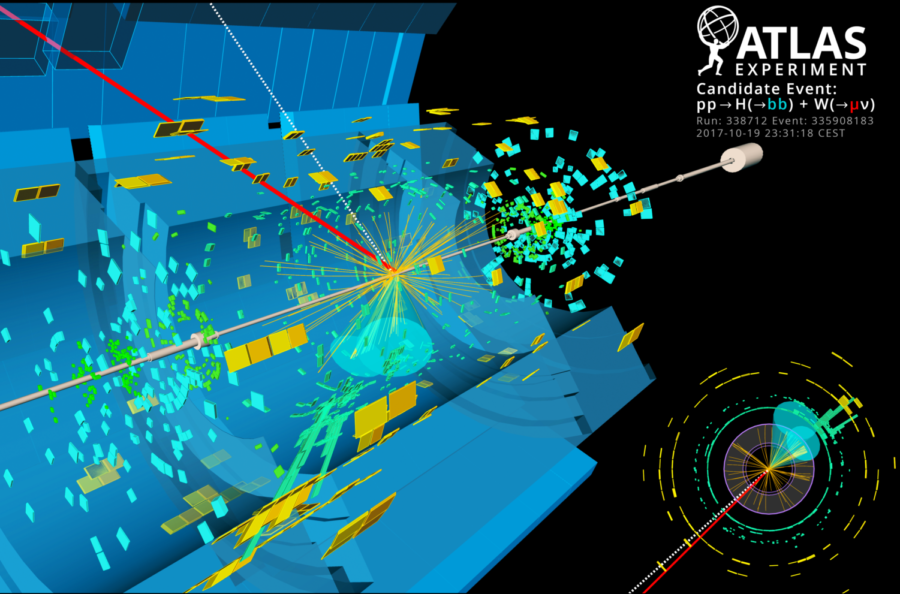Iowa State Physicists help the world better understand Higgs boson decay through international collaboration
Photo courtesy Iowa State News Service
A diagram of the ATLAS particle physics experiment at the Large Hadron Collider in the CERN laboratory.
October 22, 2018
For the last 10 years, Iowa State physicists Chuhui Chen, Jim Cochran and Soeren Prell have been collaborating with physicists around the world on the Large Hadron Colliders ATLAS experiment.
The ATLAS experiment, which is taking place at the Large Hadron Collider in Geneva, Switzerland, has recently announced after years of searching, they have observed the Higgs boson decay into a pair of bottom quarks.
In a general sense, a “quark” is a subatomic particle that is believed to give protons and neutrons of an atom their masses.
There are six different types of quarks and physicists are trying to find how the Higgs boson gives these quarks and other particles their masses.
After only discovering Higgs in 2012, this observation of its decay into two bottom quarks is a breakthrough in understanding the elements of the Higgs boson.
This discovery of the Higgs boson decay could also lead to further discoveries, including the discovery of dark matter.
“Just to put it in perspective, there is four times more dark matter in the universe than visible matter, almost all of the universe is dark and there is a lot of stuff that we have no idea what it is,” said Prell, professor of physics.
The experiment has required physicists to rely on hundreds of computers and detectors to observe large sums of data, then to sort it out and simplify it for physicists to use.
Currently at Iowa State, physicists have been working on developing quality and control tests, as well as procedures to help upgrade the innermost layer of the ATLAS detector.
Weighing approximately 7,000 tons and being 151 feet long, the ATLAS detector is a lot like a large digital camera that observes the proton collisions that occur in the Large Hadron Collider.
Due to radiation damage, as well as the creation of better technology, the parts within the detector need to be swapped out periodically for the experiments to become more precise.
“It is such a big detector and so complex you really don’t want to replace things once they are in there, so we intend to build the inner component of the detector and leave it there for the next ten years,” Prell said. “That is why it needs vigorous quality control checks to make sure that, yes, this can last the next ten years until the end of the experiment.”
Along with working on future quality control, the team at Iowa State is also currently working on analyzing the current data in search of new physics. As of right now, Iowa State doctoral student Carlos Vergel Infante is in Switzerland, taking shifts working on the experiment.
“We and our group make an effort to send every graduate student for at least some period, typically a year, to the actual experiment,” Prell said. “It’s very different whether you are far away and only look at data in your own lab than actually go to the real experiment.”







